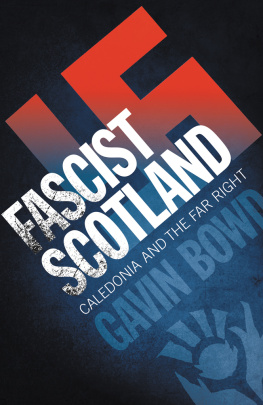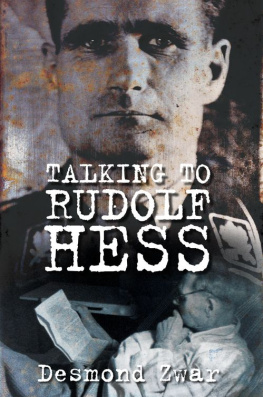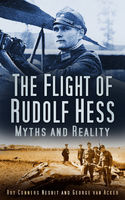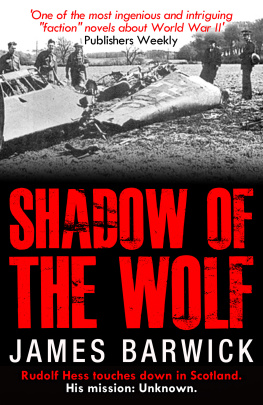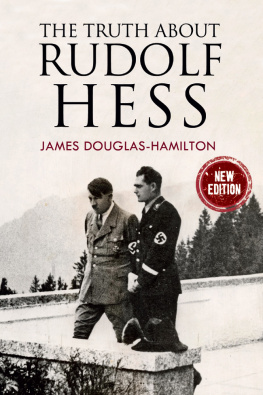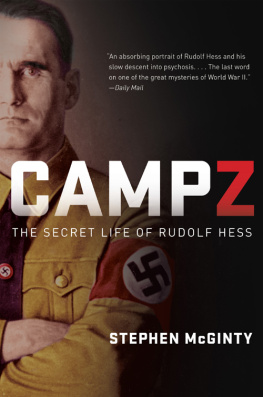FASCIST SCOTLAND
Gavin Bowd teaches French at St Andrews University. He has published widely on Scottish, French and Romanian culture and politics. He is also a poet, fiction writer, journalist and translator.

This ebook edition published in 2013 by
Birlinn Limited
West Newington House
Newington Road
Edinburgh
EH9 1QS
www.birlinn.co.uk
Copyright Gavin Bowd 2013
The moral right of Gavin Bowd to be identified as the author of this work has been asserted by him in accordance with the Copyright, Designs and Patents Act 1988
All rights reserved. No part of this publication may be reproduced, stored or transmitted in any form without the express written permission of the publisher.
ebook ISBN: 978-0-85790-568-0
ISBN: 978-1-78027-052-4
British Library Cataloguing-in-Publication Data
A catalogue record for this book is available from the British Library
It is a terrible thing, said Miss Carmichael, to see the best of our lads marched off, generation after generation, to fight the battles of the English for them. But the end is upon them. When the Germans land in Scotland, the glens will be full of marching men come to greet them, and the professors themselves at the universities will seize the towns. Mark my words, dont be caught on Scottish soil on that day.
Evelyn Waugh, Officers and Gentlemen
List of Illustrations














Acknowledgements
I would like to thank the following for their help and inspiration while writing this book: Dani Bruns, Stephen M. Cullen, Mairi Cunningham, Nigel Dennis, Alec Finlay, Ray Furness, Stuart Kelly, John Manson, Annie Tindley, Agns Villette, Ian S. Wood, Matt Worsley and Annette Zimmermann.
Prologue
At dusk on 10 May 1941, an enemy aircraft was plotted off the coast of Northumberland and made landfall close to the Farne Islands. Wing Commander the Duke of Hamilton, then on duty at RAF Turnhouse near Edinburgh, received a report from the Royal Observer Corps that the enemy aircraft was an Me110 fighter-bomber. The duke thought this to be a mistaken identification as this type of plane had only once before been seen as far north as Northumberland, and, without extra fuel tanks, could not make a return flight to Germany.
The audacious pilot of this intruding aircraft was Rudolf Hess, Deputy Fhrer of the Third Reich. He had begun his journey in Augsburg, Bavaria, navigating northwards with the help of transmitting stations in Denmark Jackal, Jasmine and Hyena before turning westwards. On two Ordnance Survey maps covering the south of Scotland and the north of England, Hess had marked railways and prominent landmarks. With a red arrow he had indicated his planned destination: Dungavel House, near Glasgow, home of the Duke of Hamilton.
On approaching the coast, Hess spotted the peak of the Cheviot. In a letter to his five-year-old son Buz, he would describe a heavenly, polar-like view. Hesss manoeuvres, and the arrival of a bank of mist on the coast-line, confused the Spitfires scrambled to intercept him. Instead, the Deputy Fhrer climbed up the side of the Cheviot Hills and slid down into Scotland. He then headed for St Marys Loch. On this late spring evening, there were still people working in the fields, and Hess waved cheerfully to them from treetop level. His aircraft sped on at 300 mph, burning up its fuel. At about 22.45 he passed very close to Dungavel House.
The Observer Corps in Galashiels reported the enemy aircrafts entry into the Ayr Sector of No. 13 (Fighter) Group. Normal action
On landing, Hess had lost consciousness. He told Buz:
I woke in a German-looking meadow, not realising where I was and what was happening to me. When I first saw my parachute lying behind me, it became clear to me that I had arrived in Scotland, the first landing place of my Plan. I was lying some ten metres from the front door of the house of a Scottish goatherd. People came running towards me, alarmed by the burning aircraft. They looked at me in a compassionate way.
He had landed at Floors Farm, 12 miles to the west of Dungavel House. He was lying ten metres from the cottage of a ploughman, Donald McLean, who had been preparing to go to bed when he heard the noise of the aircraft, and had gone to investigate when he saw a parachute floating down. On helping the man to his feet, he noticed he was wearing a foreign uniform underneath his flying clothes. McLean asked him if he was German, to which Hess replied in English, Yes, I am Hauptmann Alfred Horn. I have an important message for the Duke of Hamilton.
While an elderly neighbour went off to report the incident and get help, McLean helped Hess into the cottage he shared with his mother. The Deputy Fhrer was offered a cup of tea but said he preferred a glass of water. His hosts were impressed by Hesss air of authority, uniform of fine soft cloth, expensive gold wristwatch and magnificent flying boots lined with fur. Two Home Guard officers turned up at the cottage, one of them the worse for wear, and the captive was eventually transferred to Maryhill Barracks in Glasgow.
In conversation with the Scottish Area Commander of the Observer Corps, Major Graham Donald, Alfred Horn declared that he was on a special mission to see the Duke of Hamilton. Donald was sure that he was in fact Rudolf Hess and reported: he is, if one may apply the term to a Nazi, quite a gentleman... I found him to be a very interesting, and quite pleasant fellow, not in the least of the tough young Nazi type, but definitely an officer who might be a very important man in higher Nazi circles.

